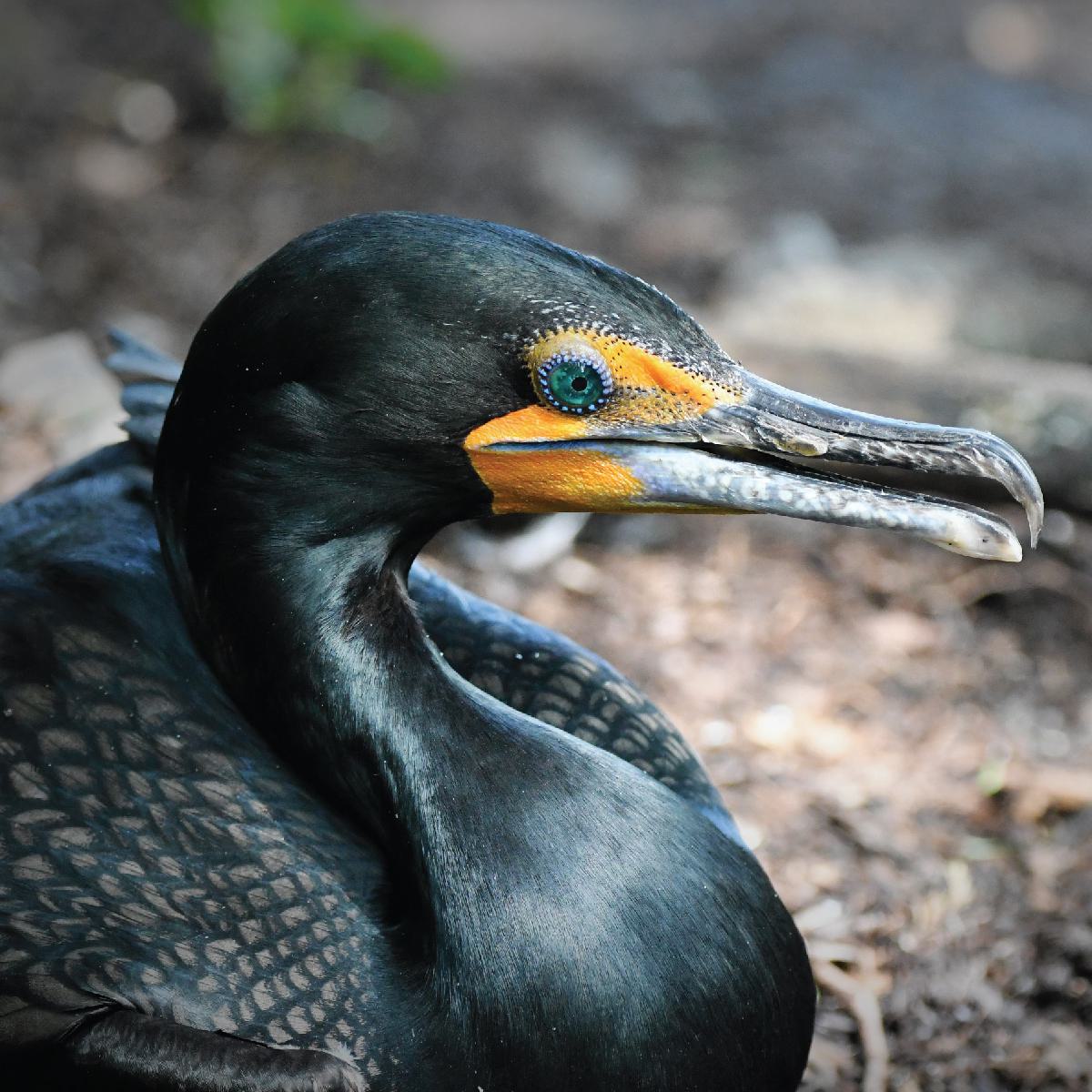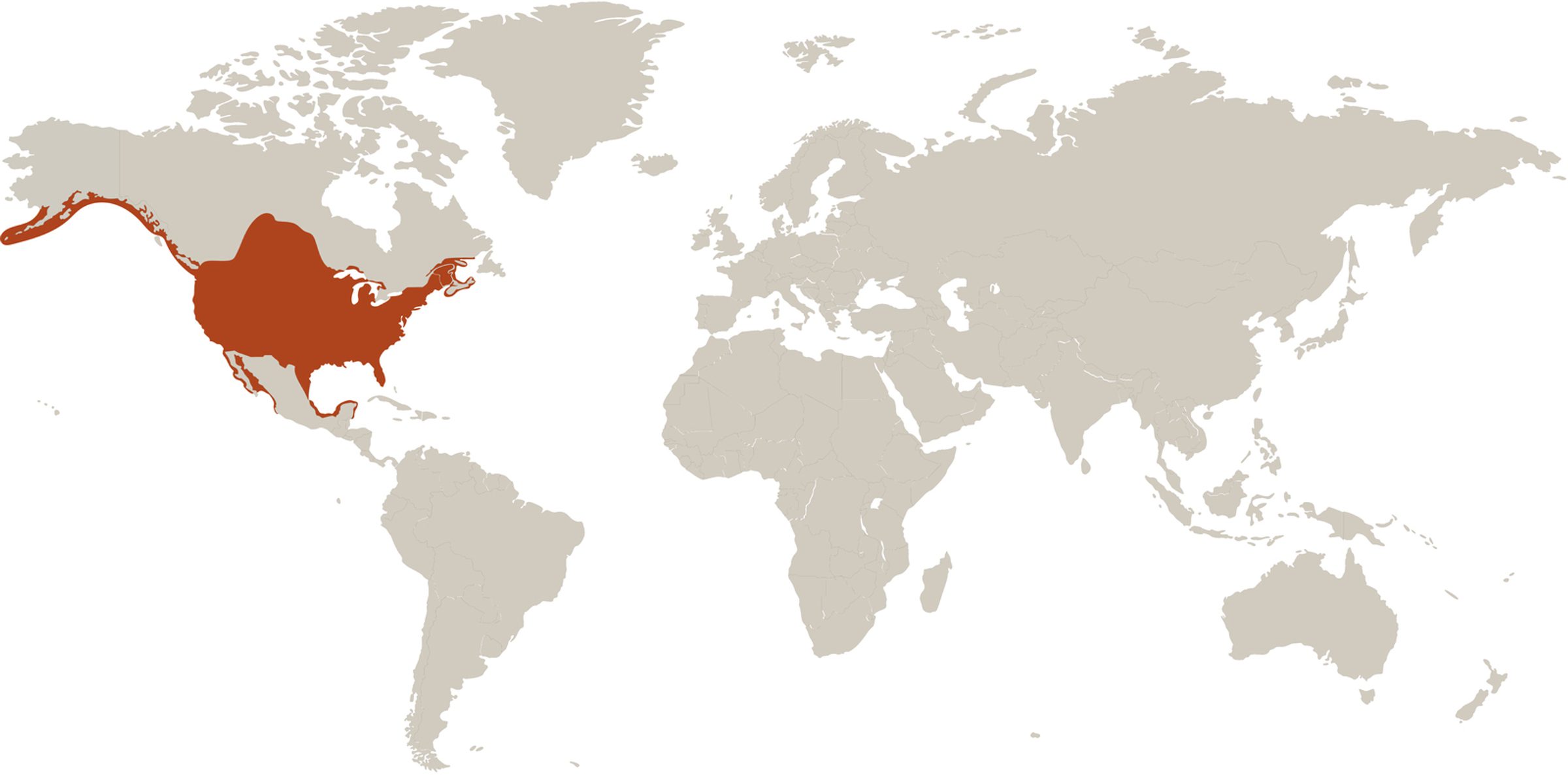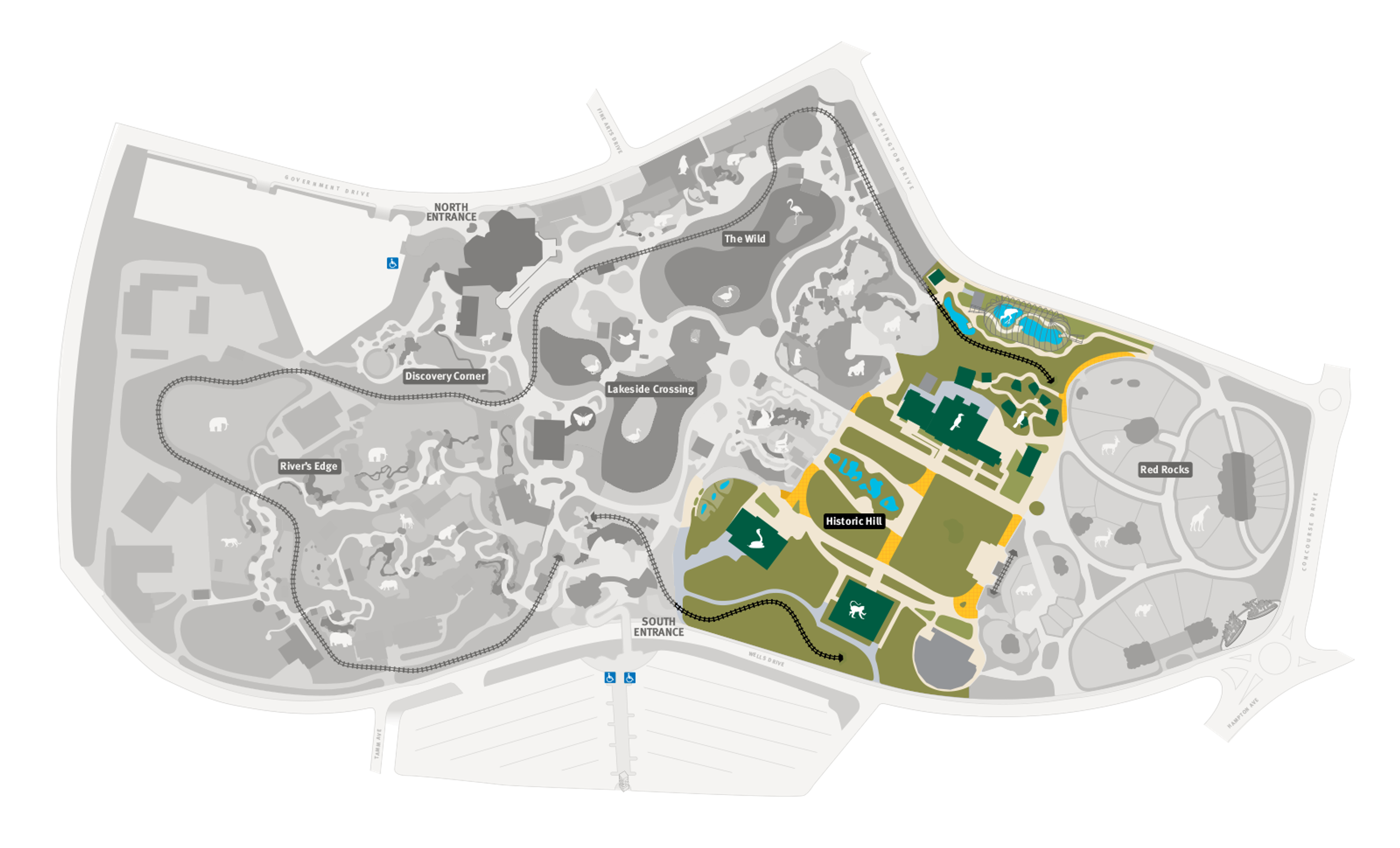
Double-crested Cormorant
Phalacrocorax auritus
Did you know?
- Cormorants feed and nest in large colonies.
- Its favorite foods include fish, crab, shrimp and frogs.
- Females lay three to five eggs, which take about a month to hatch.
- Chicks stay with the parents up to 40 days before they're ready to go out on their own.
- This bird is adaptable and may be found in a variety of aquatic habitats.
Young and Family
Cormorants feed and nest in large colonies. The nest is usually a crude platform of sticks or seaweed that the birds build on cliffs or in trees. Females lay three to five eggs, which take about a month to hatch. After hatching, the chicks stay with the parents up to 40 days before they are ready to go out on their own.
Acrobatic Eaters
Double-crested cormorants make their home on the coasts and on inland waters. They feed almost exclusively on fish. After diving underwater for a meal, they surface, flip the fish in the air, and swallow it head-first.
Threat Level
- Unknown
- Common
- Near Threatened
- Threatened
- Endangered
- Critically Endangered
- Extinct in the Wild
Common
The Double-crested Cormorant is widespread and abundant.
Range
North America, West Indies
Habitat
Lakes, rivers, swamps, seacoasts

We care about double-crested cormorants
The Saint Louis Zoo supports double-crested cormorants in the Cypress Swamp. Learn more about how we are helping wildlife around the world.
Find this animal in Historic Hill

SAINT LOUIS ZOO ZONE
Historic Hill
Historic Hill is a lovely stroll through one of the oldest parts of the Saint Louis Zoo. From the 1904 World’s Fair Flight Cage to the Spanish architectural flavor of the 1920s in the Bird House, Primate House and Herpetarium to the finishing touches of our thoroughly modern exhibits, this area of the Zoo has a unique ambiance and a nostalgic history that make it a great destination.

